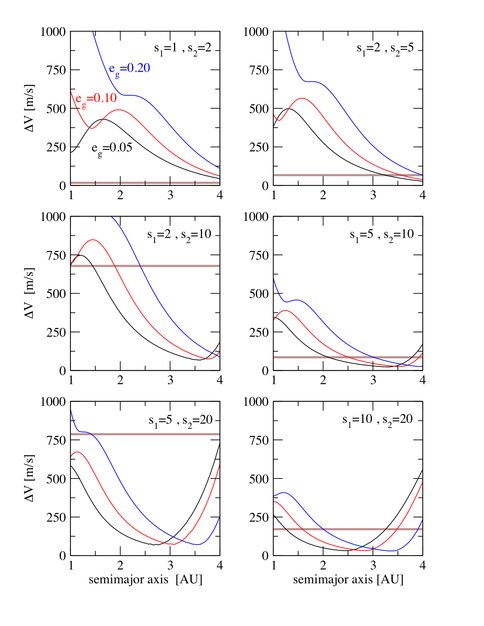2010 Annual Science Report
 University of Hawaii, Manoa
Reporting | SEP 2009 – AUG 2010
University of Hawaii, Manoa
Reporting | SEP 2009 – AUG 2010
Planetesimal Accretion in Binary Star Systems
Project Summary
We have studied the collisional growth of planetesimals in a circumstellar disk in a binary star system. Our simulations shows in an eccentric disk, the precession of the gaseous component causes large planetesimals in the outer part of the disk to collide and accrete to larger objects.
Project Progress
We analyzed the dynamics of individual kilometre-size planetesimals in circumstellar orbits of a tight binary system. We included both the gravitational perturbations of the secondary star and a non-linear gas drag stemming from an eccentric gaseous disc with a finite precession rate. We considered several precession rates and eccentricities for the gas, and compared the results with a static disc in circular orbit.
The disc precession introduced three main differences with respect to the classical static case. (i) The equilibrium secular solutions generated by the gas drag are no longer fixed points in the averaged system but limit cycles with frequency equal to the precession rate of the gas. The amplitude of the cycle is inversely dependent on the body size, reaching negligible values for ~50-km-size planetesimals. (ii) The maximum final eccentricity attainable by small bodies is restricted to the interval between the gas eccentricity and the forced eccentricity, and apsidal alignment is no longer guaranteed for planetesimals strongly coupled with the gas. (iii) The characteristic time-scales of orbital decay and secular evolution decrease significantly with increasing precession rates, with values up to two orders of magnitude smaller than for static discs. Finally, we applied this analysis to the binary-planetary γ-Cephei system and estimated impact velocities for different-size bodies and values of the gas eccentricity. For high disc eccentricities, we found that the disk precession decreases the velocity dispersion between different-size planetesimals, thus contributing to accretional collisions in the outer parts of the disc (Figure 1). The opposite occurs for almost circular gas discs, where precession generates an increase in the relative velocities.
Figure 1. Relative collision velocities, as function of the semimajor axis, for several pairs of different sizes (values given in kilometers). Line colors correspond to different gas eccentricities, indicated in the upper left-hand plot. The broad horizontal brown line gives the limit for disruption collisions
Publications
-
Beaugé, C., Leiva, A. M., Haghighipour, N., & Correa Otto, J. (2010). Dynamics of planetesimals due to gas drag from an eccentric precessing disc. Monthly Notices of the Royal Astronomical Society, 408(1), 503–513. doi:10.1111/j.1365-2966.2010.17132.x
- Haghighipour, N. (2010). Planets in Binary Star Systems. Astrophysics and Space Sience Library. Vol. 366. Berlin: Springer.
- Haghighipour, N., Beauge, C., Winter, O.C., Sudol, J.J., Eggl, S. & Pilat-Lohinger, E. (2010). Collisional Growth of Planetesimals and the Formation of Terrestrial Planets in Binary Star Systems. European Planetary Science Congress 2010. Rome. Italy.
-
PROJECT INVESTIGATORS:
-
RELATED OBJECTIVES:
Objective 1.1
Formation and evolution of habitable planets.

